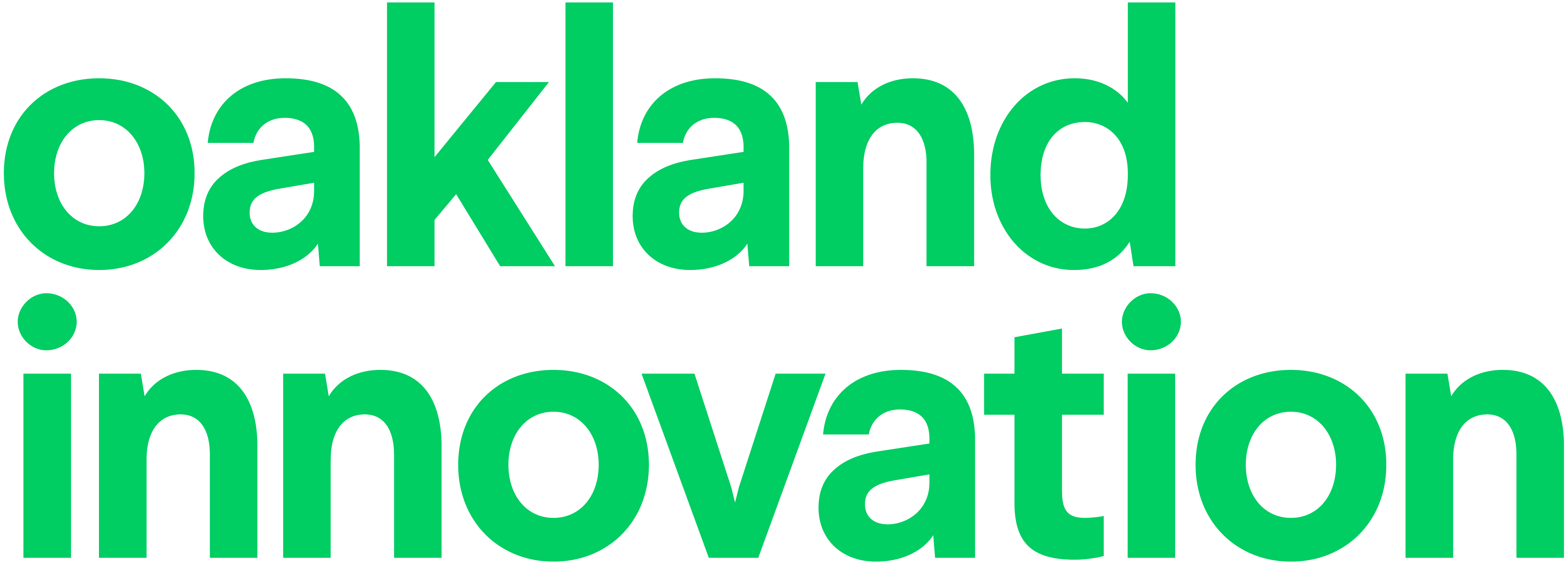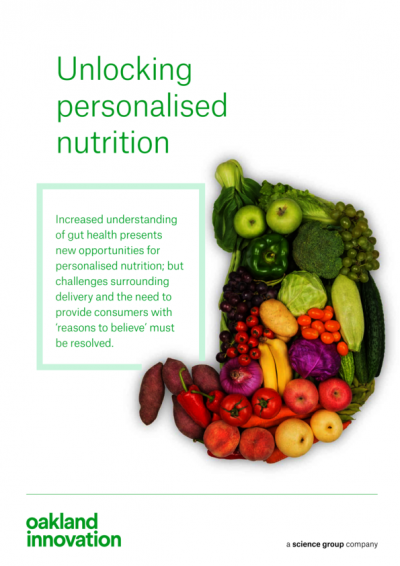Promotional Features
Personalized nutrition: How technology is unlocking a complex, disruptive market
is uncovering a market tipped to be worth $16.4 billion by 2025.1 Multiple pitfalls and barriers lie between companies and those dollars, though. To realize the opportunity, companies will need to address the thorny issue of accessing consumers’ personal data and disrupt the very systems they use to get food to market.
Consumers can already buy personalized products that offer specific nutritional attributes. Yet, there remains considerable scope to improve the offering. Many products contain the same antioxidants, stimulants and other ingredients that people have been taking for 20 years, just repackaged as a solution tailored to address a need or set of needs of a specific cohort. That is not good enough. Consumers will lose faith and move on over time.
The industry can do better. The scientific literature is rich with examples of personalized responses to diet, such as the link between Prevotella bacteria and glucose metabolism and the role Akkermansia muciniphila plays in insulin sensitivity.2,3 New knowledge is accruing continually. The challenge for the industry is to find the mix of products, processes and technologies needed to translate breakthrough science into personalized nutrition services that deliver meaningful, measurable improvements.
The mix of products, processes and technologies companies need to access the market will depend on their approach to commercialization. Four broad models are available to companies, based on the level of personalization and whether they are targeting the prepackaged or food service markets. The paths to success for a food-service company that allows people to pick from a limited range of preset options and a provider of truly personalized, prepackaged products will be very different.
Each path entails giving consumers reasons to believe in a product or service, thereby driving repeat purchases, but how that is achieved varies by commercial model. Companies that provide a limited range of preset options, as happens in a Quick Serve Restaurant, can use the installed, mass-market manufacturing footprint and provide a perception of personalization without knowing much about their customers.
True personalization is more disruptive.
Why personalization requires disruption
Personalized products will cost more. To justify the additional cost, consumers need to truly believe that the personalized product will make a positive difference in their life; companies need to design their systems to achieve this goal. A product that helps a consumer in a way that they cannot track or quantify is unlikely to drive repeat custom.
The importance of positive feedback loops, in which a consumer sees the impact of consuming a product, makes fitness and sports nutrition ideal proving grounds for personalized products. It is easy to track if a personalized nutrition product is enabling an individual to complete 5 km runs in faster and faster times. Many consumers already use wearables to track such data. It is however far harder to show a product has had a measurable effect on anxiety and other variables relevant to the broader wellness space.
However data enters the feedback loop, the process will need to be seamless. A system that requires users to manually upload data for several minutes a day is likely to suffer a high dropout rate as people stop providing the information needed to track their progress and inform product personalization.
Putting data at the heart of a personalized service creates other challenges. A consumer will need to share a considerable amount of information about their health, lifestyle and microbiome to receive a personalized nutrition product. The positive feedback loop central to the model is then reliant on the consumer continuing to share data on an ongoing basis, throwing up questions about privacy, data ownership and data use that the industry and society in general are yet to resolve.
Personalized nutrition is set to be similarly disruptive to food systems as it cannot be delivered using centralized, mass-market infrastructure. Even if a company overcame technical challenges such as label personalization and how to clean between repeated ingredient changes in a way that complied with regulations designed for mass-market manufacturing, it would still struggle to get a product to a consumer in a timely way to meet immediate needs.
As shipping may take several days, the variables of consumer need that dictated the composition of the product may have changed by the time it is used, meaning it is no longer personalized at the point of consumption. In some use cases, the variables may change slowly enough that the delay between production and consumption is irrelevant. However, in other cases, such as management of a skin condition that is affected by the weather, the delay will be critical.
In general, personalization will be most realistic and believable when feedback loops spin faster than existing infrastructure can personalize products and get them to consumers. That means companies need to consider ways to decentralize food systems and move the final personalization step closer to the consumer.
There are a limited number of locations consumers visit often enough to serve as a suitable place for the final personalization step to happen. The home of the consumer is one suitable location. Gyms, offices, coffee shops and other places consumers visit on a daily basis are the other option.
Technical solutions will differ in each environment. Companies will have the most flexibility by having the personalization step happen in gyms or food service environments, where there is the space and dedicated staff to create a premium experience. Home-mixed products are likely to be more basic. In shifting the point of personalization closer to the consumer, companies may limit regulatory burden to the components used to make a personalized product, rather than the compounding step itself.
How technology unlocks the market
Regardless of whether a personalized product is provided in the home or a food service environment, the end-to-end process is likely to involve activities that are outside of the traditional areas of expertise of food and nutrition companies. To succeed, companies will need digital ecosystems that drive the positive feedback loops and new supply chains capable of rapidly tailoring products to individuals.
Technology will be central to creating digital ecosystems and reinventing food distribution. To access the required technology, food and nutrition companies may choose to partner with technology and data specialists and leverage existing infrastructure.
The existing digital infrastructure provides companies with abundant options. A company could tie itself to the Apple ecosystem, using an API to acquire data captured by each user’s Watch device into its own cloud-based system. The company could further minimize the need for internal expertise by leveraging an existing cloud solution. Other companies may work with consultancies or other partners to build a more customized system in an effort to differentiate their service and improve the user experience.
Reinventing food distribution presents fewer opportunities for partnerships. Companies can still rely on the support of third-party experts but are likely to want to retain greater control over the physical manifestation of their system than the digital ecosystem.
Physically making a personalized product in the consumer’s home or at a food-service location poses multiple challenges. The system has to safely deliver the right formulation every time. For example, powders need to be flowable and within their shelf life. A mixing system with cleaning features to prevent contamination is required. The mixing, dosing and packaging systems must work together. A connection to a cloud and analytics engine is essential.
Each part of the electromechanical devices designed in response to those challenges needs to work consistently and connect seamlessly. Frequent failures and faults risk stripping consumers of reasons to believe in a service and the personalized nutrition products it delivers, making it harder for companies to retain users. The technology needed to deliver such consistency exists but the margin for error is small.
Companies developing technology unlocks for the personalized nutrition market can partner with the consulting organization Science Group. In doing so, companies will access the technical expertise and market expertise needed for the strategic execution of ideas, thereby equipping themselves to thrive in a fast-growing but complex space.
References
1. Personalized Nutrition Market worth $16.4 billion by 2025. https://www.marketsandmarkets.com/PressReleases/personalized-nutrition.asp.
2. Kovatcheva-Datchary, P. et al. Dietary Fiber-Induced Improvement in Glucose Metabolism Is Associated with Increased Abundance of Prevotella. Cell Metab. 22, 971–982 (2015).
3. Dao, M. C. et al. Akkermansia muciniphila and improved metabolic health during a dietary intervention in obesity: relationship with gut microbiome richness and ecology. Gut 65, 426–436 (2016).


